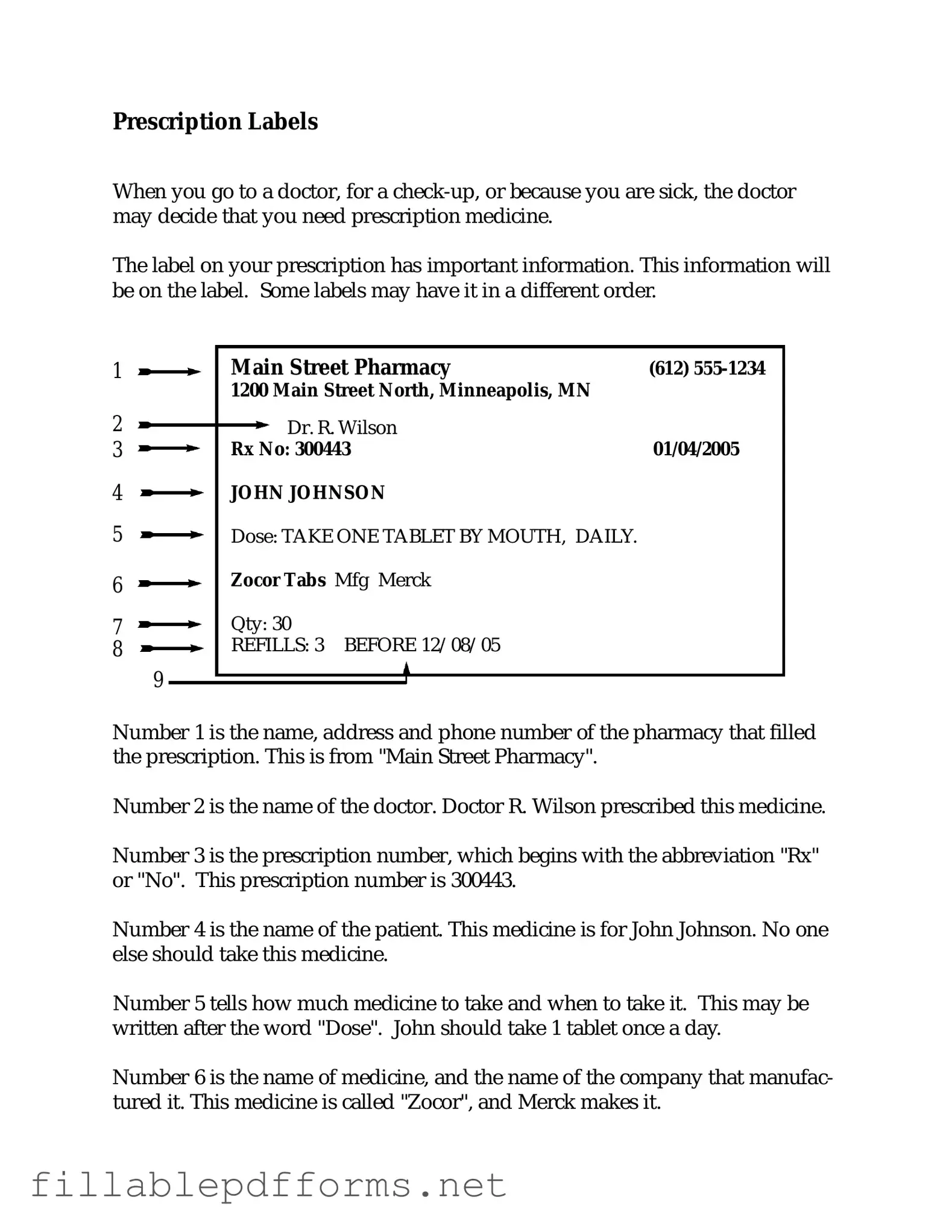The Prescription Label form plays a crucial role in the healthcare system, serving as a vital communication tool between healthcare providers, pharmacists, and patients. This form typically includes essential information such as the patient's name, the prescribing physician's details, medication name, dosage instructions, and the pharmacy's contact information. Additionally, it often contains important warnings and potential side effects, ensuring that patients understand how to take their medication safely. The design of the form aims to minimize errors and enhance patient adherence to prescribed therapies. By standardizing the information presented, the Prescription Label form helps bridge the gap between medical advice and patient understanding, ultimately contributing to better health outcomes. Furthermore, it emphasizes the importance of clarity and accuracy in medication management, which is essential for both patient safety and effective treatment plans.
